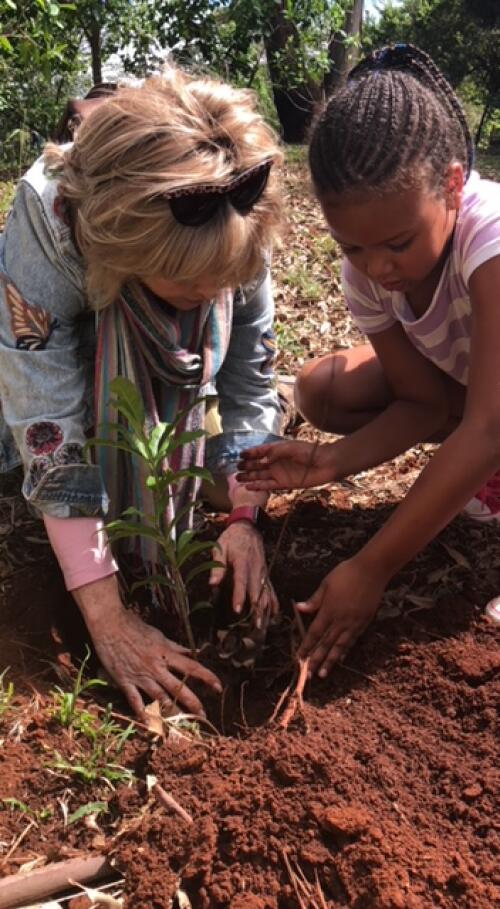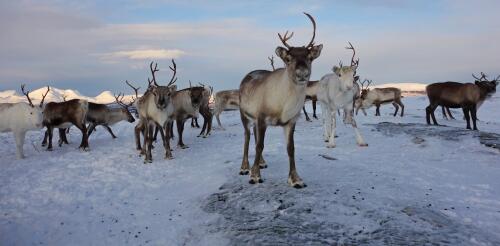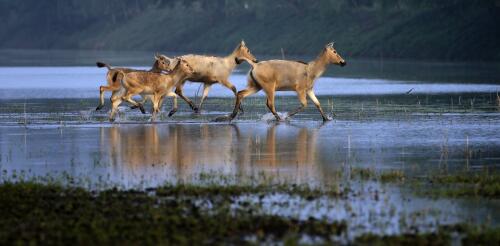Wildlife
WLU’s Dr. James Wood and his BIO-207 Fundamentals of Ecology & Biodiversity class have been positively impacting the environment through meaningful service projects. At the U.S Fish and Wildlife Service’s Ohio River Islands National Wildlife Refuge on Buffalo Creek, near Wellsburg, students engaged in removing both invasive species and litter from the refuge. Monitoring and removing invasive species is important for protecting pollinators and wildlife habitats. “Getting students outside of the classroom provides students with hands-on experiences that create personal and educational connections that enrich students’ college careers. Actively engaging students in wildlife management and restoration projects like this allows students to connect with community partners on a professional level, potentially opening the door for meaningful job opportunities,” explains Dr. James Wood, Assistant Professor of Biology...
A reflection of the planet’s increasingly volatile climate and the enduring influence of industrial interests, North American grasslands find themselves at the epicenter of one of the most severe biodiversity crises on the planet. Formerly a vibrant mosaic of life — teeming with migratory birds, diverse fauna herds and formidable predators — the Great Plains and its dwindling wildlife serve as a reminder of the delicate balance essential to sustain ecosystems while also supporting the success of industries necessary for the regional economy and human coexistence. Data indicates that, in the past century, over 60% of native grasslands, totaling 360 million acres, have vanished. Adding to this, another 125 million acres are at risk in the foreseeable future as warming temperatures create opportunities for expanded agriculture in the Northern Great Plains, while woodland encroaches upon grasslands in the Southern Great Plains. But the implic...
In the Arctic, the freedom to travel, hunt and make day-to-day decisions is profoundly tied to cold and frozen conditions for much of the year. These conditions are rapidly changing as the Arctic warms. The Arctic is now seeing more rainfall when historically it would be snowing. Sea ice that once protected coastlines from erosion during fall storms is forming later. And thinner river and lake ice is making travel by snowmobile increasingly life-threatening. Ship traffic in the Arctic is also increasing, bringing new risks to fragile ecosystems, and the Greenland ice sheet is continuing to send freshwater and ice into the ocean, raising global sea level In the annual Arctic Report Card, released Dec. 13, 2022, we brought together 144 other Arctic scientists from 11 countries to examine the current state of the Arctic system. Some of the Arctic headlines of 2022 discussed in the Arctic Report Card. NOAA Climate.gov...
As the world parses what was achieved at the U.N. climate change conference in Egypt, negotiators are convening in Montreal to set goals for curbing Earth’s other crisis: loss of living species. Starting on Dec. 7, 2022, 196 nations that have ratified the U.N. Convention on Biological Diversity will hold their 15th Conference of the Parties, or COP15. The convention, which was adopted at the 1992 Earth Summit in Rio de Janeiro, is designed to promote sustainable development by protecting biodiversity – the variety of life on Earth, from genes up to entire ecosystems. Today, experts widely agree that biodiversity is at risk. Because of human activities – especially overhunting, overfishing and altering land – species are disappearing from the planet at 50 to 100 times the historic rate. The United Nations calls this decline a “nature crisis.” This meeting was originally scheduled to take place in Kunming, China, in 2020 but was rescheduled be...




